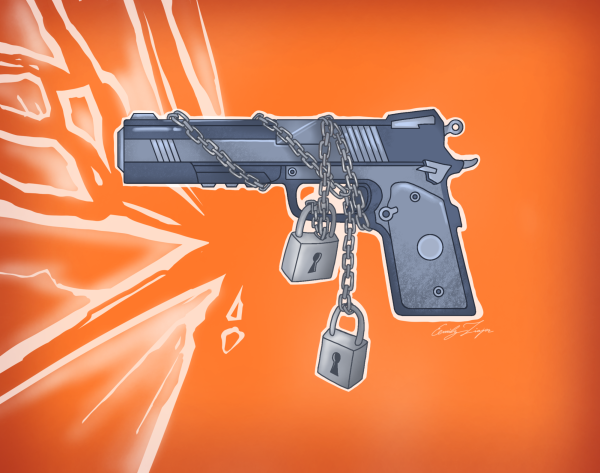In defense of nail polish
As previously mentioned in our features section in our Sept. 17 issue, a new invention out of North Carolina is visibly causing a stir. The invention is a nail polish that changes colors when dipped in drinks containing drugs such as Rohypnol, GHB or Xanax, commonly referred to as “date rape drugs.”
To us, this seems like a positive invention. Many of the loudest voices discussing the matter publicly would disagree. Students, it seems, aren’t sure exactly what to think.
We start from the entirely uncontroversial position that rape, or sexual assault to any degree, should not occur. One very effective way of accomplishing this is to stop those who would assault, either through education or harsh legislation. The blame in sexual assault cases rests always on the attacker. Most sides of the argument seem to agree with this concept.
However, a vocal (if not large) group are of the opinion that this is the only acceptable way we can fight this problem. Those people suggest that solutions focusing on victim behavior distract from solutions focusing on rapists and constitute victim blaming. These ideas are therefore repulsive and to be discarded immediately.
This is where we disagree.
Solutions focusing on the rapists themselves are based on one key assumption: it is possible to completely eliminate the desire to rape from a population. Without weighing in on the validity of this assumption, achieving it in the real world is a utopian goal. As a newspaper, we strive to understand the world as it is, rather than how it might someday be.
A more multilateral approach is necessary. This is where choices like the nail polish come into practice. The nail polish is one way by which a would-be victim might choose to proactively protect his- or herself from a would-be predator. We don’t stop going after the predators, we just arm the victims as well. The use, or failure to use, a certain product in no way moves the onus of responsibility to the victim.
We accept this logic in many areas of our lives. The existence of locks on our houses speaks to this. Is it your fault if your house gets broken into? No. It’s the burglar’s fault, lock or not. The reality is that some people are going to try to break into houses, and it doesn’t hurt to have a product available that helps would-be victims proactively defend themselves, should they choose to.
What the four undergraduate students from North Carolina State University did is create an option. That’s it. They didn’t say to stop talking about sexual assault. They didn’t say this solves the problem. It may be true that such a product simply treats the symptoms, instead of addressing the sickness directly. In this case, though, the symptoms destroy lives. If we have a method of treating them, no matter how limited, it seems foolish to discard it out of commitment to an ideal world that might not ever exist.







